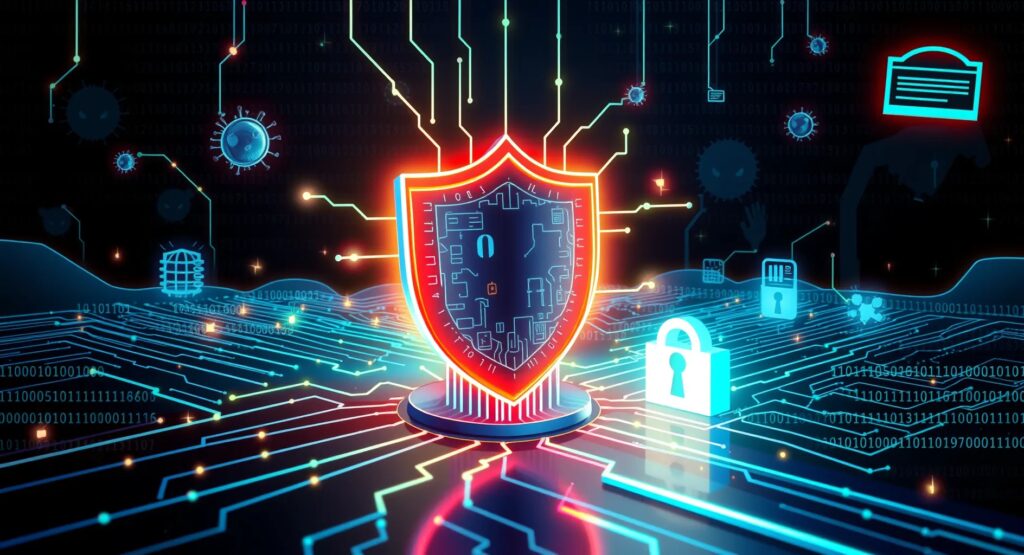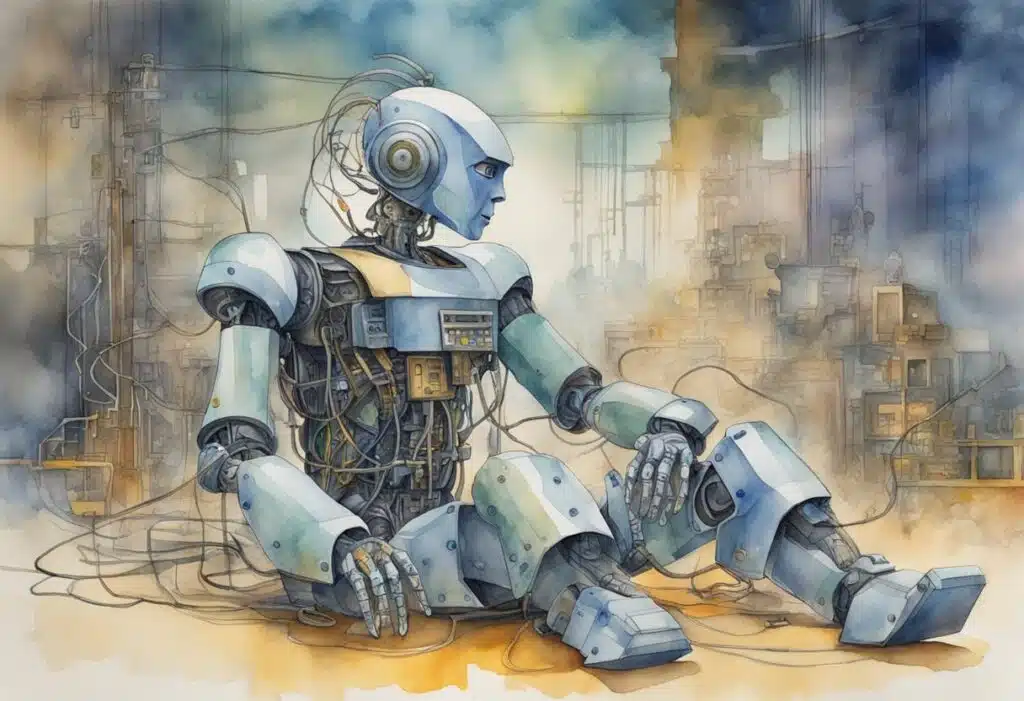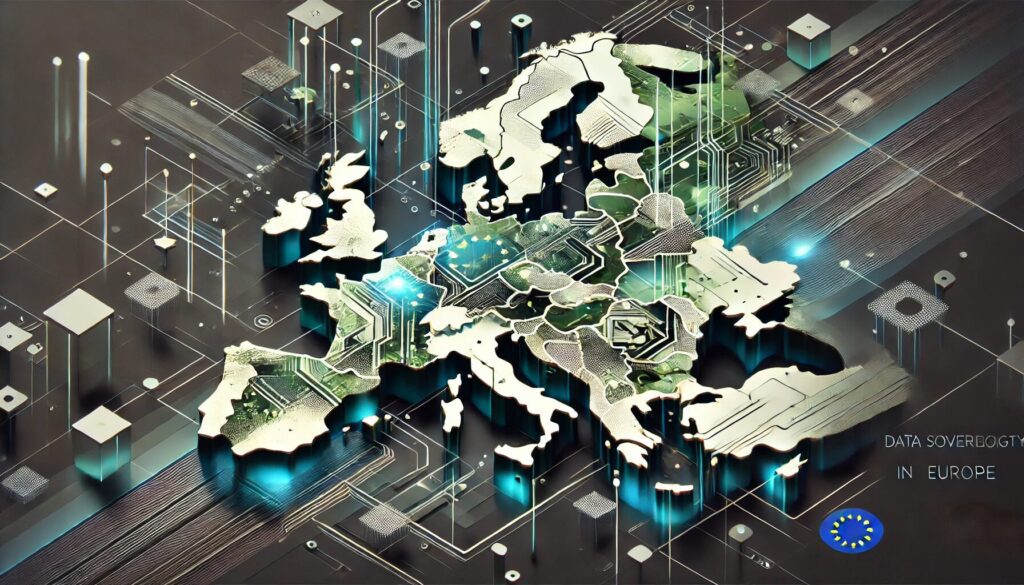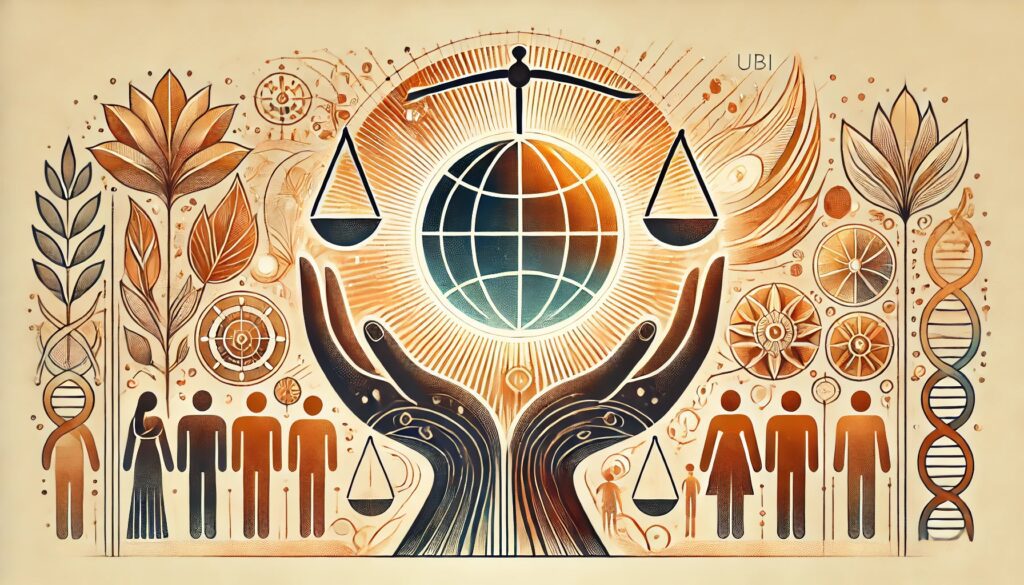Understanding Deep Fakes
Deep fakes utilize artificial intelligence (AI) to manipulate or generate visual and audio content with a high potential to deceive. The primary tool behind these synthetic creations is a type of machine learning called deep learning, which constructs convincing falsehoods by analyzing the patterns in real audiovisual data.
To discern between what is real or fake, we must observe the media critically. Glitches, inconsistent lighting, and unnatural movements can be subtle hints that point towards a falsification. However, as technology advances, these signs are becoming less apparent. Thus, we rely on more sophisticated AI detection tools to combat these increasingly subtle deep fakes.
We can break down the issue into two components:
- Real Content: Genuine videos or audio that reflect true events, body movements, and speech.
- Fake Content: Manipulated media that can be almost indistinguishable from the original.
The distinguishing aspect of deep fakes is their growing sophistication. With every passing day, the technology improves, making it challenging even for experts to spot the differences without the help of advanced tools. We recognize the potential dangers, such as misinformation and fraud, hence, we emphasize the importance of media literacy and awareness.
To keep up, we encourage the ongoing education of journalists, content creators, and the general public in verification techniques. By staying informed about the capabilities and the tell-tale signs of deep fakes, we empower ourselves to maintain a grasp on reality in a digitally altered world.
Technological Advancements in Deep Fakes
The landscape of digital media has evolved swiftly with the advancements in deepfake technology, heightening the need for awareness and understanding of its tangible effects.

Improvements in Realism
In recent years, we have witnessed significant improvements in the creation of deepfakes, particularly in their realism. Deep Learning (DL) and advancements in image processing allow the generation of hyper-realistic videos and images. A realistic deepfake can now be astonishingly difficult to differentiate from authentic media, as these techniques enable the synthesis of facial expressions and body movements that match the original human subject with high fidelity.
- Current examples include realistic deepfakes of celebrities and political figures, which have been distributed across various platforms. The verisimilitude of these deepfakes often calls into question the reliability of digital media, making it a pressing concern for information integrity.
A study conducted by the Fraunhofer Institute for Systems and Innovation Research ISI, on behalf of TA-SWISS, investigates the current state of deepfake technology and its impact on various sectors of society. The use of deepfake technologies has enormous creative and economic potential, in politics, business and society.
— Fraunhofer Institute for Systems and Innovation Research ISI
Methods and Technologies
Our understanding and employment of deepfake-generating methods have evolved to involve a range of sophisticated technologies. This arsenal of tools includes, but is not limited to, deep neural networks (DNNs), autoencoders, and Generative Adversarial Networks (GANs). These technologies facilitate the blending of images and video clips to create counterfeit visual content that bears a striking resemblance to its genuine counterpart.
- Autoencoders work by compressing data into a lower-dimensional space and then decompressing it back, ideally reflecting the original input. In the context of deepfakes, they aid in encoding facial features onto a source actor.
- GANs involve a ‘forger’ and a ‘detective’ algorithm working in opposition to each other, with one creating fakes and the other trying to detect them, iteratively improving the realism of the generated media.
By constantly refining these methods and technologies, we are able to produce deepfakes with enhanced quality and authenticity, presenting both potential creative applications and avenues for misuse that must be diligently monitored.
Risks Associated with Deep Fakes

Deepfakes represent a burgeoning threat, leveraging advanced artificial intelligence to create convincing false representations of individuals. The dangers these technologies pose are multifaceted and substantial.
Democracy at Risk: We see that deepfakes undermine the fabric of democratic societies, distorting the truth and challenging our confidence in information. They have the potential to influence elections by spreading disinformation and manipulating public perception. This undermines the democratic process and can lead to the erosion of public trust in government institutions.
International Security Concerns: The very same technology that makes it difficult to distinguish between real and synthetic media also impacts national and international security. Fabricated videos or audio clips could initiate unwarranted conflicts or escalate existing tensions between nations.
Social Unrest: In the context of social cohesion, deepfakes can sow discord and cultivate unrest. By twisting narratives or impersonating key figures, they can incite conflict and unrest within communities, leading to societal divisions.
Institutional Mistrust: Perhaps among the most concerning aspects is the loss of trust in media and institutions. As it becomes increasingly challenging to verify the authenticity of digital content, our collective trust in digital media erodes. This threatens to diminish the credibility of legitimate news outlets and the veracity of factual reporting.
Amidst these concerns, it’s clear that we must remain vigilant and develop tools and legal frameworks to combat the rise of deepfakes. Only through awareness, education, and proactive measures can we hope to protect the integrity of our information landscape.
Political Repercussions of Deep Fakes

In this section, we’re looking at the specific impacts that deepfakes have had on aspects of politics such as election integrity and international relations. These sophisticated digital fabrications are not just a cause for concern; they are actively shaping the political landscape.
Elections Integrity
Deepfakes threaten to undermine election integrity by casting doubt on the authenticity of information. During election cycles, these fabrications can seriously impact voter perceptions. For instance, compelling deepfakes may misrepresent a candidate’s position or personal behavior, potentially swaying public opinion based on falsehoods. There’s thoroughly documented evidence of instances where accused individuals have had to fend off claims of negative behavior with defenses against purported deepfake evidence. Given that elections are the bedrock of democratic societies, the ability of deepfakes to stir up unrest and doubt is particularly troubling.
International Relations
In terms of international relations, deepfakes carry the potential to incite diplomatic incidents or even conflict by fabricating inflammatory statements or actions by world leaders. False narratives can quickly escalate tensions between nations, since the doctored content can be distributed and believed before veracity can be confirmed. The disintegration of trust between nations due to deepfakes can lead to a colder and more unpredictable international climate, as seen in comprehensive analyses of deepfake implications by foreign policy experts. Our understanding of these technologies must evolve as rapidly as their capabilities to mitigate these high-stakes risks.
Counteracting Deep Fakes

Effective strategies to counteract deep fakes involve deploying advanced detection techniques, establishing robust legal frameworks, and initiating comprehensive public awareness campaigns. We play an essential role in integrating these countermeasures to ensure the integrity of digital media.
Detection Techniques
We explore various technological methods to detect deep fakes. Journalists and experts often look for inconsistencies in videos or images such as lighting anomalies, unnatural blinking patterns, or distorted audio. Artificial Intelligence (AI) plays a pivotal role in automating detection by analyzing vast datasets to identify patterns that are imperceptible to the human eye. Our efforts also extend to developing and refining AI-based techniques that can review video content for glitches and authenticate digital content more reliably.
Visual Examination:
- Check for alignment errors.
- Review for unnatural motion or skin tones.
Forensic Methods:
- Analyze file metadata for discrepancies.
- Use AI algorithms to scrutinize pixel-level details.
Legal Frameworks
We advocate for the creation of legal frameworks that criminalize the malicious use of deep fakes. These laws must balance the prevention of harm against the protection of free speech and innovation. We support policies that require transparency in media creation and clear labeling of synthetic content. The enforcement of such legal instruments can deter the creation and distribution of deceptive content, thus protecting individuals and society from the harmful misuse of technology.
Policy Advocacy:
- Push for global standards on digital content authenticity.
- Encourage the adoption of content labeling requirements.
Legal Action:
- Support legal recourse for victims of deep fakes.
- Facilitate collaboration between tech companies and law enforcement agencies.
Public Awareness Campaigns
Increasing public knowledge is crucial in our strategy to combat deep fakes. Educating individuals on the existence and characteristics of synthetic media enables them to critically assess content. Through tailored public awareness campaigns, we empower communities with the tools and knowledge to discern and report potential deep fakes. It’s imperative that we also focus on media literacy programs to help individuals understand the broader implications of manipulated media.
Education Initiatives:
- Conduct workshops on media literacy.
- Distribute educational resources through multiple channels.
Community Engagement:
- Collaborate with educators and tech experts.
- Encourage proactive discussions and peer-to-peer learning.
Examples of Famous Deepfakes
President Volodymyr Zelensky (March 2022):
- Amidst the ongoing Russia-Ukraine conflict, a deepfake video surfaced on social media, purportedly featuring Ukrainian President Zelensky calling for his armed forces to surrender1.
President Vladimir Putin (March 2022):
- Another deepfake video emerged earlier, portraying Russian President Putin advocating for peace. Twitter flagged this manipulated video, derived from authentic footage of Putin, as ‘manipulated media’1.
Cheerleading Plot (March 2021):
- Allegations arose from Pennsylvania, where a mother supposedly utilized deepfake technology to smear her daughter’s cheerleading competitors. Following an admission by prosecutors of inability to verify the video’s authenticity, charges were dropped1.
Tom Cruise (February-June 2021):
- TikTok became a platform for numerous deepfake videos showcasing Hollywood star Tom Cruise engaging in various activities, including performing a magic trick, captivating millions of viewers1.
The Queen’s Christmas Message (December 2020):
- Channel 4 in the UK aired an alternative Christmas message featuring a computer-generated rendition of the Queen. Despite its satirical nature, the video prompted complaints to Ofcom, the UK regulator1.
Nude Photo Bot (July-October 2020):
- A Telegram bot gained attention for generating nude images of women based on clothed photos, using estimations of their unclothed bodies. Concerns were raised, especially regarding images that seemed to depict underage girls1.
These instances underscore the far-reaching impact and complexities surrounding the prevalence of deepfakes across diverse spheres.
Deep Fakes: The Imperative for Further Discourse
Technical aspects:
How does the technology behind deepfakes work?
What progress has been made in the development of deepfake algorithms?
What are the main methods for detecting deepfakes and how effective are they
Ethics and society:
What are the ethical challenges associated with the proliferation of deepfakes? What are the ethical challenges associated with the proliferation of deepfakes? How can deepfakes affect trust in media and information?
What are the potential impacts of deepfakes on the political landscape and public discourse?
Legal aspects:
What legal issues do deepfakes raise, particularly in relation to privacy and copyright?Are there already laws or guidelines that deal specifically with deepfakes and how are they enforced?
Combating deepfakes:
What measures can companies and governments take to curb the spread of deepfakes? How can we better educate and raise public awareness about deepfakes?
Impact on Journalism:
Explore how deep fakes challenge the credibility of journalism and the responsibility of media outlets to verify content in the digital age.
Psychological Effects:
Investigate the psychological impact of deep fakes on individuals and society, including the erosion of trust, increased skepticism, and potential emotional harm.
Political Manipulation:
Analyze how deep fakes are used to manipulate public opinion, influence elections, and undermine democratic processes, and discuss strategies to safeguard against political manipulation.
Corporate and Brand Reputation:
Explore the risks deep fakes pose to corporate and brand reputation, including the spread of false information and the need for crisis communication strategies.
Social Media Regulation:
Debate the role of social media platforms in combating deep fakes, including policies for content moderation, user authentication, and algorithmic transparency.
Collaborative Approaches:
Consider the importance of collaboration between governments, tech companies, academia, and civil society in addressing the multifaceted challenges posed by deep fakes.
Privacy Violation:
Deep fake AI nude pictures can be created by malicious actors without the consent of the individuals depicted, leading to a severe invasion of privacy. These images can be generated using AI algorithms that manipulate and superimpose someone’s face onto explicit content, creating a false impression of nudity or sexual activity.
Future prospects:
How might the development of deepfake technologies evolve in the coming years? Are there any hopeful or promising approaches to minimize the negative impact of deepfakes?





